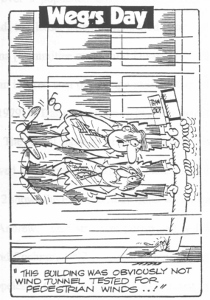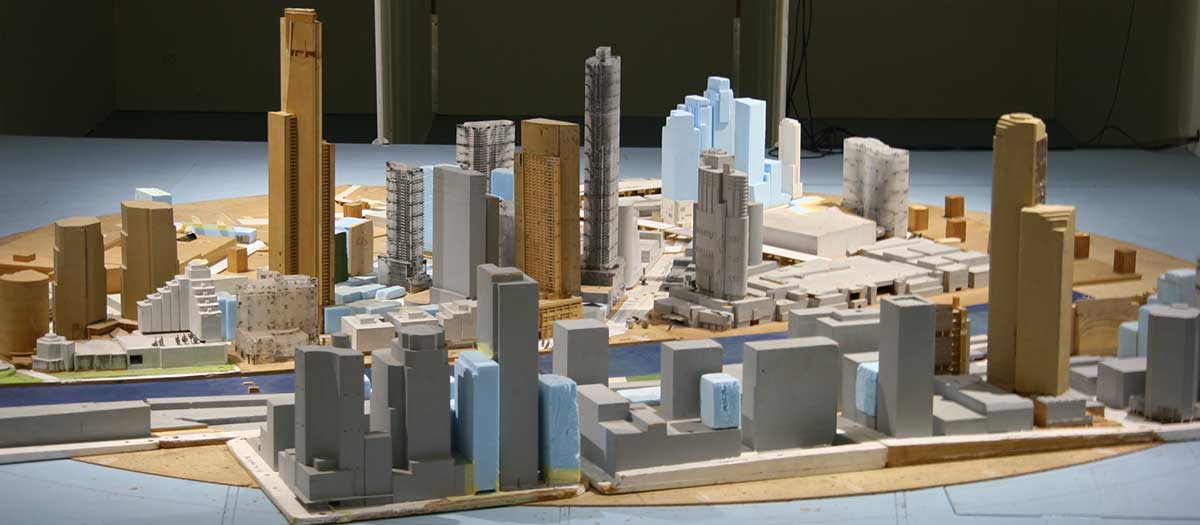 Measurements of local mean and gust wind speeds on and around the small-scale wind-tunnel model can be made in the public and private pedestrian areas and then compared with well-established comfort criteria. MEL Consultants has a database of local wind velocity records as a function of city and wind direction. If the part of the development is found to be windy then MEL Consultants' in-house model making facilities can quickly manufacture architecturally acceptable features and modify the model to explore mitigation where needed. This allows for rapid development and testing of wind amelioration strategies and minimises time in the wind tunnel resulting in lower costs to the client. Finding acceptable architectural or operational solutions at small scale in the wind tunnel is far more cost effective than resolving the wind problems when the project is complete, as suggested in the WEG cartoon (used with permission from William E Green, 1991).
Measurements of local mean and gust wind speeds on and around the small-scale wind-tunnel model can be made in the public and private pedestrian areas and then compared with well-established comfort criteria. MEL Consultants has a database of local wind velocity records as a function of city and wind direction. If the part of the development is found to be windy then MEL Consultants' in-house model making facilities can quickly manufacture architecturally acceptable features and modify the model to explore mitigation where needed. This allows for rapid development and testing of wind amelioration strategies and minimises time in the wind tunnel resulting in lower costs to the client. Finding acceptable architectural or operational solutions at small scale in the wind tunnel is far more cost effective than resolving the wind problems when the project is complete, as suggested in the WEG cartoon (used with permission from William E Green, 1991).
MEL Consultants use hot-wire anemometry to measure the pedestrian wind speeds in the wind tunnel. This technique provides a quantitative measurement of the mean and peak wind speeds that can also be integrated with wind climate probabilities to determine the number of hours per year the wind speed criteria are exceeded for the test locations. This allows developers to make informed decisions as to the level of wind amelioration needed. The hot-wire or hot-film method of evaluating pedestrian wind conditions is well established in wind engineering and aeronautics; having its origins in the NACA work of Schubauer and Klebanoff in the 1940s. It is superior to other techniques such physical erosion or computational fluid dynamics (CFD). A full discussion of the latter may be found in Cochran and Derickson (2011).


